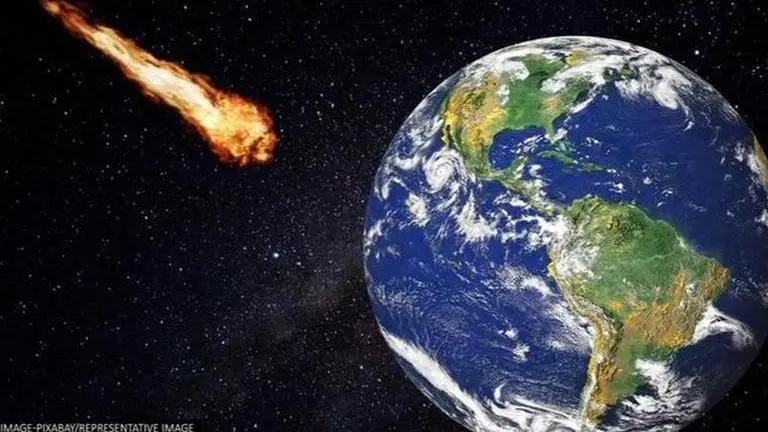Updated 15 October 2021 at 23:18 IST
Nuking a hazardous asteroid can reduce the threat by 99%, new study suggests
Nuking an asteroid one month prior to its collision to Earth can reduce the threat by 99%, revealed a study by physicists at the John Hopkins University.
- Tech News
- 2 min read

Blasting an incoming hazardous asteroid using nuclear warheads to avoid mass extinctions of Earth could actually work, suggested a new study conducted by physicists at the John Hopkins University in US' Maryland. Much like the movie Armageddon, the researchers ran a simulation where they fictionalised an incoming asteroid dubbed 2021 PDC, which gave humans on Earth less than six months to prepare, Daily Mail reported. NASA's Jet Propulsion Laboratory based in California runs such simulations every two years to study the impacts of possible asteroid collisions to Earth.
New Study: Nuking Asteroid Would Stop 99% Of It Hitting Earth https://t.co/15Jynj5kBV pic.twitter.com/Sv967LS2hf
— The Daily Wire (@realDailyWire) October 15, 2021
Nuking asteroid can stop collision impact by 99%
Analysing the simulation, where the asteroid 2021 PDC is blasted with one megatonne nuclear bomb while on a collision course to Earth, showed that impact can be reduced by 99%. Here, the size of the approaching asteroid also significantly matters so for their study, the scientists chose a considerably large asteroid measuring one hundred metres.
In an interview with Gizmodo, lead study author Patrick King said that the impacting mass from hitting the Earth can be prevented 99 per cent or more if a robust nuclear disruption technique is deployed at least one month before the impact. In addition to this, the study showed that the impact can be averted by 99.9% in some cases if the approaching danger was nuked two to six months prior. Although, the results for asteroids relatively bigger than 2021 PDC weren't much to celebrate still better than expected.
Published in the journal Acta Astronautica, the study is a result of King's PhD thesis while a student at Lawrence Livermore National Laboratory (LLNL), reported Gizmodo.
Advertisement
What happens to the resulting fragments?
To answer this particular question, King's colleague Michael Owens reportedly developed a software called 'Spheral' to study the orbital tendencies of the fragments resulting from the nuclear detonation. Needless to say, the missile fired at a much later period will result in higher levels of threats by the fragments as the asteroid would be much closer to our planet.
Addressing the same, King stated that Nuking an asteroid and its potential splattering into boulders are a compromise that must be considered while employing the disruption technique. He further added that its possible that the threat might get multiplied with several fragments emerging from a single impactor but asserted that a disruption can work where deflection can not, as per Gizmodo.
Advertisement
(Image: Pixabay)
Published By : Harsh Vardhan
Published On: 15 October 2021 at 23:24 IST
